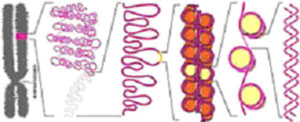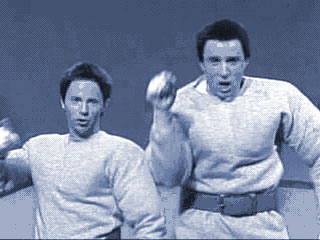What I thought I'd do over the next few blogs is talk about how a scientist might go about changing your DNA to make you stronger and/or have more endurance. I'll talk about what the very real risks are and how gaming authorities might be able to detect these changes.
To make my points, I'll be discussing two of the genes I talked about in my last blog. One is a version of the EPO receptor gene that gives people more endurance naturally. And the other is a version of the myostatin gene that can make you stronger. Of these two, the most likely to show up soon in an athlete near you is the EPO receptor one.
The first point I want to bring up is that these are not separate genes that certain people have. Everyone has two copies of the EPO receptor and myostatin genes. Some people just have different versions.
The second point is that a scientist can't simply tinker with your DNA and turn your EPO receptor gene into the version that gives you more endurance. DNA is way too tangled a mess for any scientist to make these sorts of precise changes.
People tend to portray DNA as long strings of four different letters. This makes it sound simple to deal with-- just Control-F and then edit. Reality is much more complicated.
 Our DNA comes in pieces called chromosomes (most people have 46 of them). A chromosome is an inches long, invisibly thin molecule with hundreds of millions of letters that we can't see. The DNA is wrapped around millions of little spools all trapped inside the nucleus of the cell. When a scientist tries to make a change in your DNA, he or she can't unravel it and splice in new letters like type setting or old fashioned film editing.
Our DNA comes in pieces called chromosomes (most people have 46 of them). A chromosome is an inches long, invisibly thin molecule with hundreds of millions of letters that we can't see. The DNA is wrapped around millions of little spools all trapped inside the nucleus of the cell. When a scientist tries to make a change in your DNA, he or she can't unravel it and splice in new letters like type setting or old fashioned film editing.
The scientist needs to break whichever chromosome the gene is on in the right place without affecting any other chromosomes. This needs to happen inside the nucleus without being able to see the letters. And it has to happen in lots of different cells all at once. Then the scientist needs to put it all back together again. Scientists just don't have the technology or the know-how to do this in people yet.
What scientists can do, though, is something called gene therapy. In gene therapy, a scientist adds a gene to your DNA so that you now have three (or more) copies of a gene instead of the usual two. What this means is that when you get the extra gene(s), you'll still have your normal versions too. And, depending on the specific gene version, this can sometimes be a problem.
There wouldn't be any trouble with the EPO receptor version we've been talking about. This version has the instructions for making an EPO receptor that is always on. So if a scientist puts this version into your cells, your normal versions won't matter. This version of the EPO receptor is dominant-- it'll always be on.
But myostatin is a different story. The myostatin gene version that gives bigger muscles has the instructions for a broken myostatin protein. What do you think would happen if a scientist adds a broken version of a gene to normal versions? That's right, nothing. Unless the scientist can come up with a special dominant negative gene version.
A dominant negative version of a gene makes a protein that can keep any good versions from being able to work. Scientists are working on finding useful dominant negative versions of the myostatin gene as we speak.
The next step to making you stronger and giving you more endurance will be to put these two gene versions into your cells with gene therapy. I'll talk about some of the ways to do this in my next blog.
 Dr. Barry Starr is a Geneticist-in-Residence at The Tech Museum of Innovation in San Jose, CA.
Dr. Barry Starr is a Geneticist-in-Residence at The Tech Museum of Innovation in San Jose, CA.
 Someday genes may "pump you up."
Someday genes may "pump you up."
